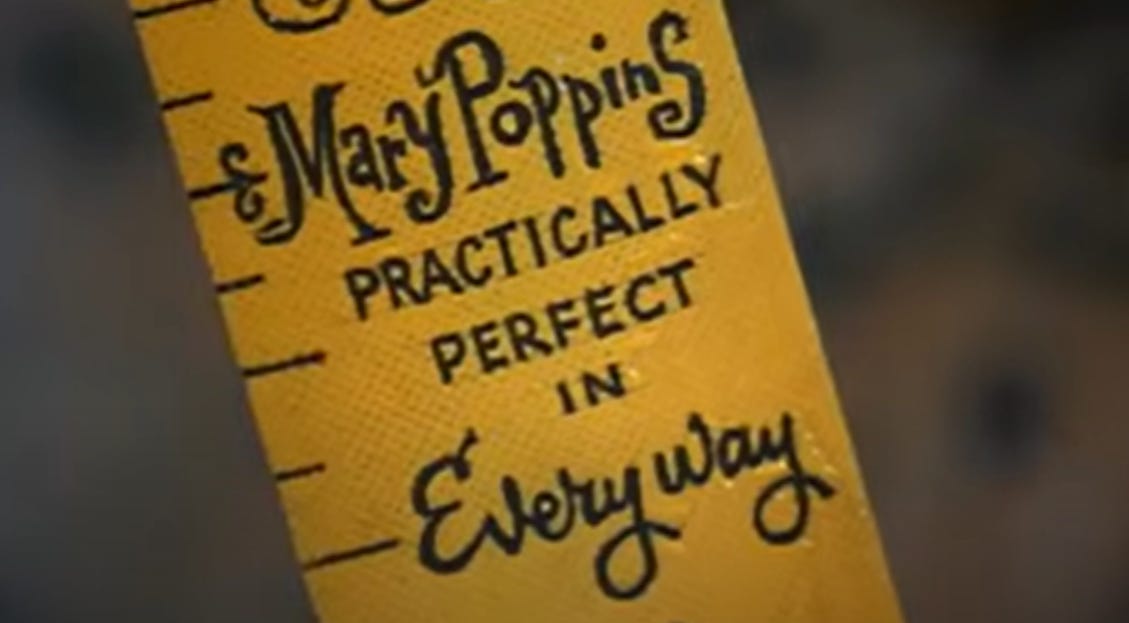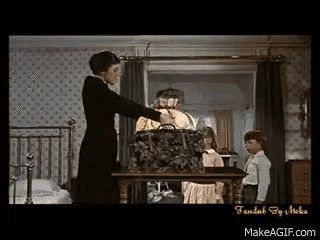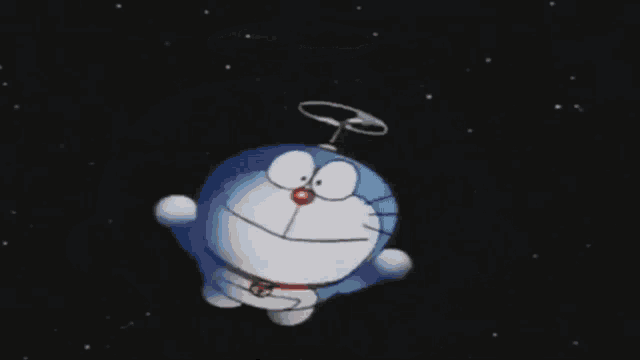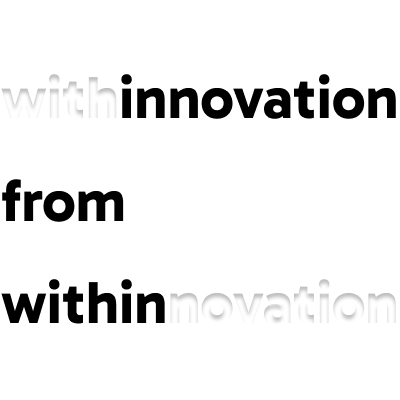Innovation lessons hidden in Magic Pockets from our childhood's favorite movies
Learn how the magic pockets of iconic characters: Mary Poppins, Hermione, Genie, and Doraemon, offer lessons for intrapreneurs in bringing ideas to life
It’s Sunday and a witch, a nanny, a genie and a magic robotic cat walk into a bar…
wait… no, I’m not so good at these jokes, they actually walk into a Substack publication.
The witch says, “My bag's a classic case of undetectable extension!”
The nanny adds, “Mine is powered by the principle of kindness. You’d be amazed how far a little charm goes.”
The genie interjects, “Mine? Let’s just say, a magic flying carpet isn’t as interesting as my wish-conceding lamp.”
The robotic cat ponders and says, “Wait, your bags have limits? Mine uses 4D tech. Unlimited is standard.”
The bartender sighs: “Clearly, innovation thrives when you think outside the bag!”
Welcome to the power of magic bags: in fiction, or outside of it, I'm bringing you today a post that is filled with references from hopefully a lot of childhoods.
Today’s special? A quick lesson on the magic pockets from Pop Culture, from 1964, 1970s, 1992 and 2010s. These everyday-looking containers, from lamps to bags, held extraordinary possibilities. No one guessed at first glance how much they held or how much they could do.
Their magic pockets, much like their personalities, are tools for overcoming challenges, engaging others, and bringing ideas to life in unexpected ways, with a tiny bit of preparation, a great use of their skills, and a little bit of hocus pocus or… Supercalifragilisticexpialidocious.
Let’s unpack the magic, shall we?
1. Mary Poppins’ carpet bag, spoonful’s of sugar and imagination

«Never judge things by their appearance, even carpet bags.»
Mary Poppins (1964)
I could bring you ten other lessons from Mary Poppins, but this one can hit home the most. The carpet bag looks like the ideal thing to compare you with: You don’t have to “look” like an innovator to be an innovator.
What do they look like anyways? Judging by how you look, could we know how many ideas you carry? How many things you know? You might take great ideas out of that bag, that you can get to in times of need.
This is how being an intrapreneur helps you. You try to ideate, maybe collaborate with others, to eventually get to the materials you need and build that idea you’ve been dreaming of!
In Mary Poppins case, her carpet bag is endless, pulling out everything from a mirror to a coat rack, which is welcomed with the Banks’ kids shock and wonder.
In “A Spoonful of Sugar” song, she advises the Banks children, Jane and Michael, with one of the most famous Mary Poppins sayings that
“A spoonful of sugar helps the medicine go down.” and
“In every job that must be done, there is an element of fun.”
Mary Poppins (1964)
Essentially, some tasks in life seem dreadful, for instance, cleaning and tidying a room, but they don’t always have to be.
Anything can be fun if one improves their spirit. If a person is joyful, things will get better. They might sometimes struggle, but having a positive mindset and attitude will help them accomplish their goals.
In your job, too! And that’s why I talk about intrapreneurship: empowering you to make your ideas come to life, see the light of day, something that inspires you, while also driving value for the company you work for. You were hired to do a specific set of tasks, that’s for sure, but you should also be able to change how they get done, improved, what you can focus on with your specific skillset.
It’s not just the carpet bag that makes Mary Poppins a great nanny. It’s her approach as well! Mary understands that winning people over requires more than just utility… It demands empathy, positivity, and a touch of creativity.
Mary Poppins is not much into showing, but rather telling: she inspires the kids to try new things, see different perspectives, while allowing them to play with imagination. Are they truly entering new worlds or just playing make-believe? That “spoonful of sugar”? It’s the little gestures, clear communication, and alignment with their goals.
Practical tip: The next time you’re presenting a new initiative, think like Mary. What can you pull out of your bag to make the idea resonate? A vivid metaphor? A quick prototype? A simple narrative that reframes the problem?
Your takeaway: Think of your stakeholders like the Banks family. Their buy-in doesn’t come from rules and directives alone; it comes from meeting their needs and making the process engaging, even enjoyable! So if you’re trying to pitch an idea to your boss or get buy-in from colleagues, having a prototype or making it fun and the problem quite visible might be the way to go.
Hermione Granger: The Relentless Pursuit of Knowledge
Full disclosure: I’ve seen the movies, but never read all the books. So I’m just going to base this next part on the specific part of Hermione’s enchanted bag that has everything she needs, seeming smaller than it is, due to a charm.
Do you have a charm to make the your growth or skills undetectable?
Not really, unless you’re hiding your successes at work, or the potential of your ideas and drive to make them a reality.
So here, what we can get inspired with is: Hermione’s mind. Like her trusty enchanted bag in Deathly Hallows, she carries spells, books, and tools for every occasion. But let’s not forget what makes her exceptional: her discipline and determination to learn. I don’t say we need to be extremely stuck in processes and rules like Hermione is, but we could all get inspired from her desire to learn!
Practical tip: Adopt Hermione’s “be prepared” mindset. A little extra effort can make your pitch stand out, especially if you’re trying to convince your boss about the potential of your idea… which you want to make a reality!
Your takeaway: Innovation is successful when you have two big ingredients: curiosity and preparation. While the office might not have Time Turners (to go back in time, etc.), your ability to dig deep into research, spot opportunities, and leverage expertise can set you apart.
Genie: Flexibility Meets Visionary Thinking
"Wait, don't go! (Stop pan.) I can see that you're only interested in the exceptionally rare. I think then, you would be most rewarded to consider...this. (PEDDLER pulls the MAGIC LAMP out from his sleeve.) Do not be fooled by its commonplace appearance. Like so many things, it is not what is outside, but what is inside that counts. (Another pan, this one slower to left. Again, PEDDLER rushes to catch up.) This is no ordinary lamp! It once changed the course of a young man's life. A young man who liked this lamp was more than what it seemed. A diamond in the rough. Perhaps you would like to hear the tale?”
The Peddler (or merchant), Aladdin
(Portions Copyright (c) 1992 The Walt Disney Company)
“Phenomenal cosmic power… itty-bitty living space.” Genie’s lamp may be small, but his creative problem-solving is boundless. He adapts to challenges with a flourish, thinking outside the constraints of his container.
I LOVE the Genie, this is no understatement. It’s the funniest character Disney has ever made, it’s witty, but he’s also quite quick on his feet (he doesn’t have feet, maybe that’s why). Like the usual sidekicks of Disney (Pixar) main characters or antagonists such as Mushu (Mulan), Sebastian (Ariel) and Kronk (Yzma), he’s what makes the movie funny.
The Genie, voiced over by Robin Williams, in the 1992 version of Aladdin is one of the characters from Disney that might show you best what is a creative mind.
See that movie script from the Peddler I add as a quote above? I’ve read online some theories that it was improv, so some of the things he’s touching and showing as he’s voicing over (and animated in the movie) actually broke as he was voicing it over. Robin Williams was a great actor, comedian and voice actor, and if there’s one thing we can remind him by, is for his creativity.
The genie-us of Robin Williams (pun intended, by John Musker, from the short 8 minute video).
Having Robin Williams as a voice actor was like “Hiring a cast of thousands… right there” (Again, John Musker, in the above video).
Robin Williams’ Lesson: Williams did more than just interpreting the script and doing what he “was asked”. He turned it upside down, adding his unique voice and humor, adding fresh perspectives to the tasks at hand. And more, he did so many takes, for various versions, because in movies, as in innovation in a corporate environment, sometimes you need to test run ideas (industry might call it A/B Testing, for instance) and see what sticks best with the crowds. If you ask me, Robin Williams had more creativity than ChatGPT or any LLM. But that can be a topic for 10 other posts, because I could talk about this for hours.
For innovators, this is a reminder to trust your instincts and inject your personality into your work. Your most creative ideas often emerge when you allow yourself to break away from the “rules.”
Why does this magic lamp matter? Well, it is not just a prop but rather a narrative device that drives the story. It defines the Genie’s powers but also the rules he must follow, reminding us that creativity works best within certain constraints.
Some great movie moments from the wishes made:
When Aladdin wishes to be a prince, the Genie doesn’t just slap a crown on his head. He orchestrates a whole spectacle with elephants, and a parade. He makes it truly believable and makes it unforgettable.
After granting Aladdin’s first wish, the Genie subtly encourages him to free him with his final wish. The partnership grows because the Genie invests in Aladdin’s potential, not just his requests.
For innovators, the lamp is a metaphor for the tools or frameworks we have in our environments, but we don’t have to overcomplicate them - for instance, when prioritizing ideas, you can do it as if you were color and ripe-coding bananas, that’s the Chiquita method (me!). It’s not about what we wish we had; it’s about how we use what’s available to bring our ideas to life.
Your takeaway: Constraints often fuel creativity. Whether it’s limited budget, time, or team capacity, intrapreneurs thrive when they view these limits not as barriers but as creative prompts to try to make it in a different way.
Practical tip: The next time you hit a roadblock, channel Genie’s adaptability. What can you reframe or repurpose? Can an underutilized resource in your team double as a new tool? Can constraints guide you to an unexpected, innovative solution? What would the Genie provide?
Remember: a little playful thinking can unleash phenomenal cosmic power… even if it’s in your own itty-bitty corporate cubicle.
Doraemon: The Futurist Toolkit
The blue robotic cat carries a (4D!) magic pocket full of futuristic gadgets. Doraemon was probably my childhood’s most-watched show in the public TV channels. It’s a Japanese tv show (and movie, with several runs), with a 1970s version which I watched dubbed in Spanish. That’s quite globalized for the early 2000s!
This magic blue robotic cat goes back in time to Nobita’s timeline, its original owner’s great great grandson, so that he could help him… that’s what I learned when I was doing this post!
But Doraemon doesn’t solve problems for Nobita; he equips him to learn and grow through each invention.
Nobita was a bit of a headache of a boy, if you ask me. Always crying, and always thinking the grass is greener on the other side. And… it wasn’t!
With a sidekick like Doraemon, it allowed us, kids, to dream of having one pet or friend like that. And perhaps even dreaming of eating Dorayaki one day (which I thought was chocolate, not red bean paste, as I found out years later).
These gadgets, including the little flywheel hat, weren’t just fun, but rather, creative solutions to Nobita’s daily dilemmas, often teaching him (and us) that innovation starts with thinking beyond limitations.
Your takeaway: As an intrapreneur, your role isn’t just to deliver ideas! Your role is also to empower your team to innovate alongside you, as innovation is not really a solo job. Think of yourself as a Doraemon for your colleagues. Be your own Doraemon, and the internet your magic pocket.
Practical tip: Build a toolkit of resources for your team. Whether it’s low-code tools, templates, or an innovation playbook, ensuring that you (and your team) have the necessary tools can greatly improve a culture of creativity and self-sufficiency, and inspire more and better ideas.
Each of these characters teaches us something unique about the magic of execution. Mary Poppins shows us how to see the fun in the things that might sound boring (which in your case might be reimagining tasks and processes with your creativity), Hermione highlights the power of preparation, Genie turns constraints into opportunities, and Doraemon has tools to help others to grow.
In some way, the Intrapreneurs’ magic bag is a bit of the skills you can have, and how you use them in times of need. And if you want to innovate, change workflows, implement your ideas into an actual solution that helps you and others at work, you need to start thinking about what’s in yours.
And I offer you one magic pocket, that will keep growing, twice a week: this Substack! The online archive has all posts and I created extra pages with templates to help you along the way. So make sure to bookmark it, and in case you just joined, don’t miss out on the other funny Sunday posts!
This post was a great nostalgic research piece for me, and I hope you enjoyed it as much as I enjoyed writing it.
Here’s the key takeaway:
Lessons from Iconic Characters for Every Innovator from Within
> Mary Poppins: Engage with Empathy
- Add a "spoonful of sugar" to tough conversations --> positivity and charm go a long way.
- Use storytelling to help others see the value in your idea.
> Hermione Granger: Be Prepared and always try to learn
- Build a knowledge base or playbook for future use.
- Seek continuous learning --> take that online course or attend that workshop.
> Genie: Embrace Playful Creativity
- Use constraints as prompts for out-of-the-box ideas.
- Add humor and playfulness to your brainstorming sessions.
- Be flexible --> when one idea doesn’t work, pivot quickly and try another.
> Doraemon: Build a Magic Pocket filled with tools and frameworks for creative problem-solving
- Leverage both futuristic thinking and practical applications.
- Encourage your team to experiment and use these tools to build confidence.
Key Takeaways:
Blend preparation, empathy, creativity, and adaptability to bring your ideas to life.
If you're an innovator, it is about who you are as much as it is about what you do!So, what’s in your magic pocket? The next time you’re facing a challenge at work, channel these characters and their approaches. You may just find that the “magic” was in you all along.
Before you go: I’m thinking of building your own Innovator’s Magic Pocket that you can use, minus the magic tricks, as I’m not so good at that just yet.
In the coming weeks, but still deciding when, I’m going to create content in a different format, but still for this newsletter, and straight to your inbox.
If you want to see all posts written so far, then visit our Hub! But I’m also thinking of short, actionable, instructional videos such as:
How to use AI in all steps of the process in the best way possible?
How to use no-code tools?
Which tools are good to get started, and why?
I’m thinking of a few videos posted in the Substack, where I screenshare. But I’m open to more opinions! Podcast-versions of audio voiceover can also work. What do you think?
What do you need? What are you curious about? You can reply to this e-mail or comment through the Substack app!
Did this help you or perhaps it brought you a chuckle or two? Share this with coworkers, family or friends! 95 other people are already here, and I’m grateful for all of you!









"Their buy-in doesn’t come from rules and directives alone; it comes from meeting their needs and making the process engaging, even enjoyable!" - exactly this! This wisdom is applicable across industries or settings.
Thanks for another fantastic post. With 4D printing and metamaterials, magic pockets may soon feel more like science fiction than magic.
Mining popular culture for different versions of one thing is an excellent idea. I'm looking forward to more pieces like this one.